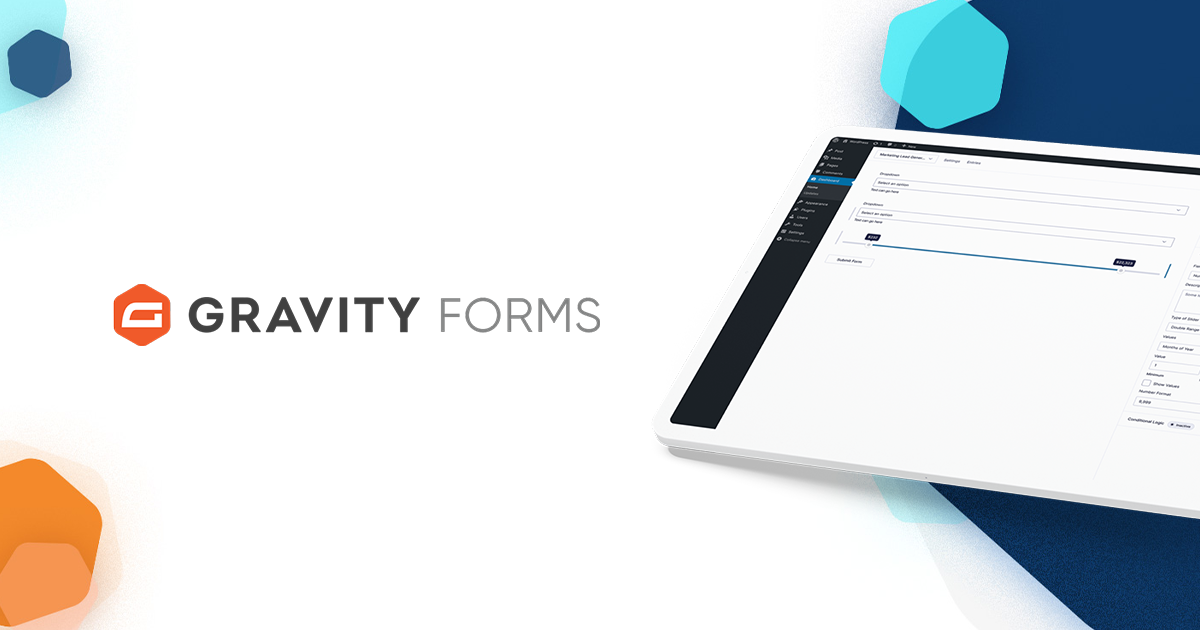Digital Accessibility: How to Get Started
Digital accessibility is a hot topic these days, and it might feel new and nebulous if you haven’t been keeping a constant pulse on the evolution of standards for modern websites and mobile applications. In reality, the concept of accessibility has been around for decades, long before the advent of the World Wide Web.
Most of us are well-versed in the ways accessibility applies to physical spaces—handrails on stairways, wide restroom stalls, braille on key signage, ramps for sidewalks, and building entrances. These accommodations help ensure that everyone can participate fully in society. In fact, many of these guidelines and requirements were established through legislative mandates, including the Rehabilitation Act of 1973 and the Americans with Disabilities Act of 1990 in the United States.
But when our daily activities started to migrate from the physical world to the digital, we didn’t have a shared standard for establishing equal opportunity on the web. In the 25 years since the internet became mainstream, we’ve made great strides in understanding the many challenges that folks with disabilities might face in accessing content on the web. Now it’s up to all of us to proactively address them and create digital spaces that are accessible to all.
What Exactly Is Digital Accessibility?
Digital accessibility refers to the concept of making digital products, such as websites, mobile apps, and other online tools, accessible to everyone.
According to the World Wide Web Consortium (W3C), “Web accessibility means that websites, tools, and technologies are designed and developed so that people with disabilities can use them.”
A disability can include vision or hearing loss, but it can also refer to other limitations. W3C has set out to “make the web available to all people, whatever their hardware, software, network infrastructure, native language, culture, geographical location, or physical or mental ability.” It’s about minimizing barriers for people, no matter how they arise.
“Accessibility is not a courtesy to a few visitors but an essential component of the quality of your work.” Rian Rietveld, Level Level
Ultimately, digital accessibility ensures inclusivity – extending the same access to content, information, and opportunity to all.
Making the Case for Accessibility Improvements
Of course you care about accessibility. It’s the right thing to do. Your motivations can be as simple as that. But the case for digital accessibility extends far beyond the ethical and moral.
An Accessible Website (or App) is Better for Business
According to W3C, more than 20% of all users will encounter challenges fully accessing the digital content and tools they need. Take a look at how many visitors your site gets and do some quick math. How many people are you losing if 20% are struggling to consume content or complete tasks? Improving their experience means an instant boost in your customer base.
An accessible website can even translate to bottom line savings in other off-line avenues. As noted by renowned accessibility experts Level Level, “When the Dutch SNS Bank improved the accessibility of its website, the number of calls to their call center decreased by 15-30%. As a result, their fixed expenses decreased substantially.”
Fortunately, many of the tweaks that improve accessibility also improve usability across the board. Using clear language, descriptive link text, streamlined navigation—it all contributes to a smoother user experience, regardless of ability or disability.
Accessibility Complaints Can Quickly Turn to Expensive Discrimination Lawsuits
The laws that govern digital accessibility vary greatly depending on your geographic location, the location of your audience, and the industry or sector of your business. For example, government and public sector websites are held to a different standard than most private industries. But as popular pizza chain Domino’s has learned, even privately owned businesses have an obligation to create inclusive experiences.
In fact, accessibility lawsuits are on the rise across all industries. In the United States, federal courts saw an increase of 177% in complaints filed under the Americans with Disabilities Act Title III (specific to digital properties) between 2017 and 2018. After holding steady for two years, 2020 saw another 12% increase, a remarkable change given the lull in court operations during the pandemic. Most notably, more and more plaintiffs cite the more stringent WCAG 2.1 AA requirements, rather than the older WCAG 2.0 AA standards published in 2008. Another good reason to stay up to date on the evolving accessibility landscape.
Trusted by millions of sites, find out why Gravity Forms is the #1 choice for businesses.
No credit card needed!
Taking the First Steps Toward Digital Accessibility
With those compelling points in your back pocket, it’s time to get started on tackling your very own website (or app) and bringing it into the welcoming world of accessibility. Here are a few tips to help you on your way.
1. Train Your Team
Digital accessibility must become a priority for your company and be given the same priority as privacy, speed, or security. It’s another—equally important— component of the quality you deliver in your customer experience. As such, accessibility training for your team is a must, especially if your team is just starting out and lacks experience. Turn to trusted authorities in the space for top-notch training courses and reliable resources.
- A11y Collective offers a range of self-guided courses, whether your focus is content, design, code, or even the business’s bottom line. Discounted course bundles are available for the most ambitious students who want to truly level up their skills.
- Deque University provides self-guided classes for on-demand training, as well as instructor-led classes, workshops, and boot camps. If you’re training a full team, Deque can work with you to deliver role-specific sessions for your QA managers, content creators, design teams, front-end developers, and even your executive leadership team.
- WordPress Accessibility Meetup is a free virtual meetup that focuses on how to make WordPress websites more accessible. Join in twice per month via Zoom to hear great presentations and connect with others.
Want to keep accessibility tips top of mind at all times? Good idea. Sign up for a11y Weekly for a trusted round-up of the best news and articles to keep your skills sharp.
2. Use the Right Tools
Many WordPress themes and plugins are still lacking when it comes to accessibility, so it’s important to do your research before selecting a particular tool or web application. For example, many websites rely on a form builder to collect leads, make reservations, or process orders. With all the various form fields and complex layouts, forms can easily become a giant hurdle for accessibility.
But a tool like Gravity Forms, that’s specifically built with accessibility in mind, can help users of any skill level create forms that are WCAG 2.1 AA compliant. Below are just a few of the accessibility-enhancing considerations that Gravity Forms can help you navigate.
- Form layout: To create an accessible form, UX best practices call for form fields to be presented in a logical, intuitive order. Gravity Forms supports multi-page forms — a user-friendly layout for longer or more complex forms. Multi-page forms make longer content more manageable by allowing you to group similar fields together and only displaying one category at a time.
- Progress status: Help your users understand where they are in the form completion process by providing a highly visible status indicator. Gravity Forms offers two options to address this function—a percentage-based progress bar or a list of progress steps to check off after each step is completed.
- Form instructions: W3C recommends that all forms include instructions at the outset of the form, clearly communicating how the user should complete the form. This allows a screen reader tool to identify any specific guidelines and eliminates any guesswork.
- Form field settings: Gravity Forms allows you to add explicit form field labels and field descriptions. Visible labels are critical for assistive devices to detect and translate. If a field label is missing, Gravity Forms will automatically use the placeholder as the field label to prevent confusion. Optional field descriptions allow the creator to include additional context or direction specific to that input area.
- Custom validation messages: Rather than simply displaying an error for incomplete or improperly completed forms, Gravity Forms allows you to create custom validation messages. This helps you give more specific direction on the appropriate fix, making your form more accessible and boosting submissions overall.
However, having an accessible form builder plugin isn’t enough to ensure your forms are fully accessible and compliant with regulations. The options you choose, the settings you select, and the theme that your site uses, all contribute towards the accessibility of your forms. For more information on how to create accessible forms using Gravity Forms, check out these Accessibility Guides.
3. Enlist the Experts
Staying on top of digital accessibility is a complex and continuous effort. No matter how talented or how experienced your developers are, everyone can benefit from ongoing education and another set of expert eyes. Specialized consultants like Level Level can help audit your site, train your team, and set you up for success going forward.
When Rocketgenius set out to overhaul Gravity Forms for their 2.5 release, they engaged Level Level consultant Rian Rietveld to conduct a thorough assessment of the tool and ensure that the team focused on the most critical features needed to support users in their quest for more accessible forms.
Final Thoughts on Digital Accessibility
The quest for digital accessibility is never finished, and vigilance helps to keep our eyes wide open to potential blind spots. Through continuing education and regular testing, we can mitigate risk, maximize reach, and create an inclusive environment for all.
Don’t have Gravity Forms yet? Don’t worry! Sign up for our free personalized demo to find out just how easy it is to create accessible forms using our powerful form builder.

If you want to keep up-to-date with what’s happening on the blog sign up for the Gravity Forms newsletter!


